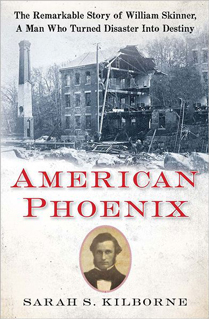I couldn’t agree more with what so many have been saying. The media makes celebrities out of those who commit massacres. This is deeply unhealthy for our culture. When I saw the cover of the New York Times on Sunday and its oversized image of Adam Lanza I thought, the editors had a choice and […]
Author of American Phoenix
Sandy Hook And The Media
So Proud: Thoughts After Midnight
By the time President Obama made his acceptance speech for a second term in office, it was well past midnight on the East Coast. Like so many other Americans, I was exhausted after a long, emotional day of hoping and worrying and wanted very much to crawl into bed but I couldn’t. I had to […]
The Audacity of Hope for My Rights: Why Voting for Obama is so Personal
Once, long ago, I was married to a wonderful man, and the marriage would have lasted long into the sunset, I’m sure, if not for one significant factor. I’m gay. Coming out wasn’t easy—my brother-in-law told me I was a disgrace to the family—but of all people, my husband was one of the gentlest souls. […]
Disappearing Acts
A friend wrote me the other day, “One thing I was left very curious about was why this history sort of disappeared from your family lore.” It’s true. It did disappear. I didn’t grow up hearing about William Skinner or the Mill River Disaster. In fact, the only place where I even found a portrait […]
A Sense of Place
Last week I returned to Williamsburg, the town in which the Mill River Flood took place. The Williamsburg Historical Society had asked me if I would speak at their annual meeting this year, in conjunction with the launch of AMERICAN PHOENIX. The meeting was held in the First Congregational Church after a potluck supper and […]
Of silk and character
“What’s finer than silk?” Joseph Allen Skinner asked at a family reunion in 1922. He then answered, “It is Character. For it is our character which lives. It is our character which influences others. It is our character which gives us our place in society…” As I write this first blog post, I cannot get […]
Copyright © 2024 Sarah S. Kilborne
